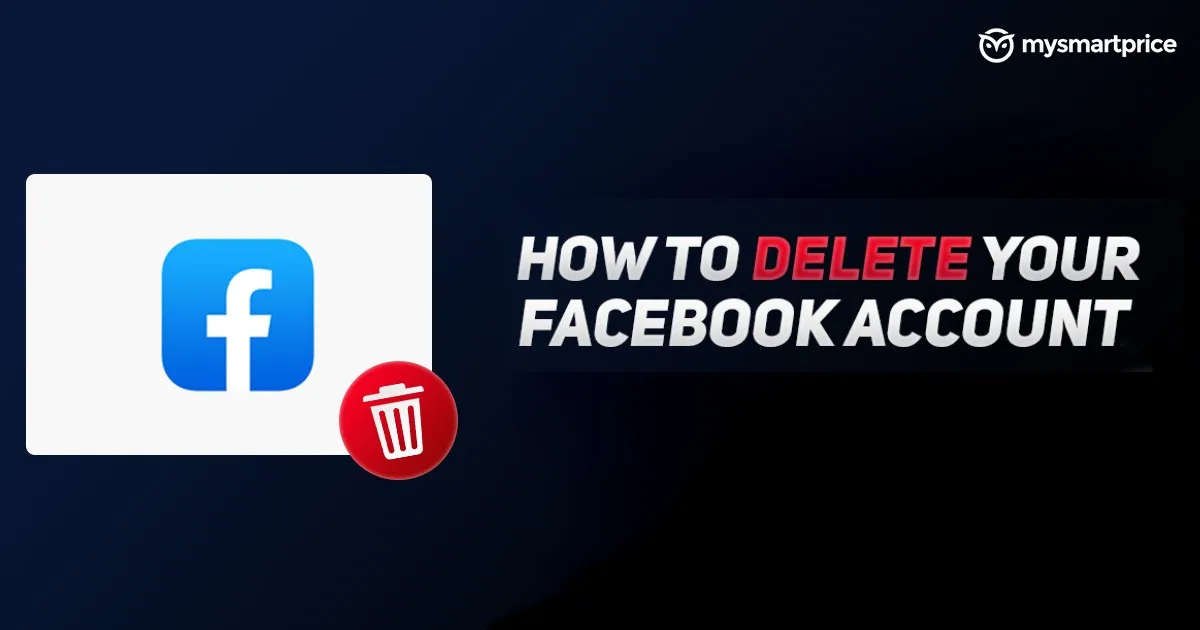Last updated on August 30, 2023
In this digital age where social media dominates our lives, it’s no surprise that Facebook has become a central platform for communication and connection. However, there may come a time when you find yourself wanting to break free from the clutches of this virtual world. Whether it’s due to privacy concerns, addiction to scrolling, or simply an urge to disconnect from the noise, deleting your Facebook account can be a liberating decision. But how does one go about bidding farewell to this online behemoth? In this article, we will guide you through the step-by-step process of permanently deleting your Facebook account and regaining control over your digital footprint.
Step 1: Backup Your Data And Photos
One of the most crucial steps to consider before deleting your Facebook account is backing up your data and photos. Your Facebook profile holds years’ worth of memories, both in the form of personal information and precious pictures. By taking the time to create a backup, you can ensure that you won’t lose any valuable content during the deletion process.
When it comes to data backup, there are various methods available. One option is downloading an archive of all your Facebook information directly from your account settings. This archive will contain everything from posts and comments to messages and photos. Alternatively, you can manually save individual items or albums onto an external storage device or use cloud-based services like Google Photos or Dropbox to store your media securely online.
Interestingly, going through the process of backing up your data can be nostalgic as well as enlightening. While scrolling through old pictures and posts, you may stumble upon forgotten moments that bring back fond memories or serve as reminders of how far you’ve come since then. It’s a chance to reflect on past experiences and appreciate how they have shaped who you are today. Plus, by saving these memories outside of social media platforms like Facebook, you gain more control over their accessibility and privacy while still preserving their sentimental value for years to come.
Step 2: Deactivate Your Account Temporarily
Once you’ve realized that deactivating your Facebook account is the best way to disconnect temporarily, it’s time to take action. Deactivating your account can be a powerful step towards reclaiming control over your online presence and regaining the freedom to live without constant virtual distractions.
One of the most enticing aspects of temporary deactivation is that it allows you to step away from the endless scrolling, notifications, and social pressures without permanently severing ties with your Facebook connections. This option lets you take a break from the noise while maintaining relationships that may be important to you. It’s like hitting the pause button on your digital life while granting yourself some much-needed breathing room.
Moreover, deactivation provides an opportunity for introspection and self-reflection. By stepping away from Facebook, even if only for a short period, you free up precious time and mental space to reconnect with yourself and enjoy more meaningful offline experiences. You might find yourself engaging in activities that were once sidelined by endless browsing sessions or rediscovering hobbies and passions that have long been neglected in favor of virtual validation. Temporarily deactivating Facebook allows you to redirect energy into personal growth and development, enabling a sense of liberation from the grips of social media addiction.
Step 3: Permanently Delete Your Facebook Account
Deleting your Facebook account may seem like a daunting step, but it can be a liberating one. Once you have made the decision to permanently delete your account, there are a few important things to keep in mind as you navigate this process. First, it is crucial to understand that deleting your account is not the same as deactivating it. Deactivation allows you to take a break from Facebook while still having the option to return at any time. However, permanently deleting your account means saying goodbye to all of your photos, posts, messages, and connections.
Before taking this irreversible step, it is essential to ensure that you have saved any meaningful data or memories from Facebook that you wish to keep. This could include downloading copies of your photos or saving important messages or conversations with friends and loved ones. Additionally, make sure that any logins or accounts tied to Facebook are updated with new credentials so that losing access won’t cause further complications.
Remember that once you delete your account, there is no going back – all traces of your Facebook presence will be erased forever. Take some time for self-reflection before making this final decision and ask yourself if disconnecting from the world’s largest social media platform aligns with what truly makes you happy and fulfilled in life. Consider the potential benefits of leaving behind a space rife with distractions and privacy concerns and imagine how life might look without constantly comparing yourself to others on social media.
Step 4: Confirm The Deletion Process
Once you have made the decision to delete your Facebook account, it is important to confirm the deletion process and understand that it cannot be reversed. This step serves as a final precautionary measure before permanently saying goodbye to all of your data on the platform.
Confirming the deletion process ensures that you are aware of all the consequences that come with this action. It’s vital to consider if there are any accounts or services linked to your Facebook profile and how deleting them might affect those. Additionally, take a moment to think about whether you have retrieved all necessary information or saved any precious memories from your Facebook account, such as photos or messages received over time.
By confirming the deletion process, you can fully acknowledge that once your account is deleted, there will be no turning back. Making peace with this reality allows for closure and empowers you to take control of your online presence. Remember, deleting a Facebook account symbolizes more than just removing yourself from a social media platform – it signifies reclaiming ownership of one’s digital identity and actively choosing what information remains connected to oneself in cyberspace.
Step 5: Post-Deletion Precautions And Considerations
Congratulations! You’ve successfully deleted your Facebook account. However, your journey doesn’t end here. There are a few precautions and considerations to keep in mind after bidding Facebook farewell.
- Firstly, be aware that your data may still exist in Facebook’s archives for a certain period of time even after the deletion process. This means that some traces of your online activity could still linger on their servers. While deleting your account significantly minimizes the risk of data breaches or unauthorized access, it’s essential to remain vigilant about protecting your personal information elsewhere on the internet.
- Secondly, it’s important to determine if any other platforms or apps were linked directly to your Facebook account. Popular services like Spotify, Instagram, or Tinder often use Facebook logins as a way to authenticate users’ identities. After deleting your account, ensure that you have created alternative accounts or updated login credentials for any services that rely on Facebook authentication.
- Lastly, take this opportunity to reflect upon how much time and energy you dedicated to social media. Deleting your account serves as a reminder to prioritize real-life connections and human interactions over online engagement. It grants you the freedom to explore new hobbies or reignite forgotten passions without constantly tending to digital distractions.
Remember these post-deletion precautions and considerations; they are an integral part of ensuring a hassle-free departure from the world of Facebook while embracing new opportunities in life beyond social media.
Conclusion:
In conclusion, taking control of your online presence goes beyond just deleting a Facebook account. While it is an important step, there are several other ways to protect and manage your digital footprint. First, consider reviewing the privacy settings on all your social media platforms regularly. This ensures that you have control over who sees your content and personal information.
Additionally, it’s crucial to think twice before sharing or posting anything online. Remember that once something is out there, it can be difficult to fully delete or remove from the internet. Being mindful of what you share will help maintain a positive online reputation.
Another aspect of managing your online presence is actively monitoring and responding to any information about yourself that may exist on various websites or search engine results. By regularly conducting searches for your name and personal information online, you can address any inaccuracies or unwanted content promptly.
Ultimately, taking control of your online presence requires proactive measures beyond deleting a Facebook account alone. It involves being vigilant about privacy settings, being cautious with the content you share, and actively monitoring and managing your digital footprint. By doing so, you can ensure that the image portrayed of yourself on the internet aligns with how you want to be perceived in the offline world too.


Be First to Comment